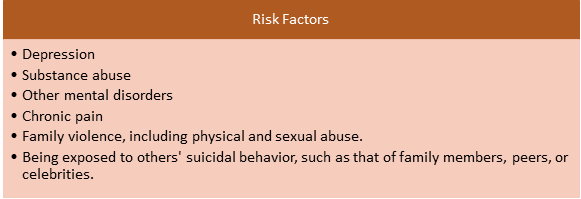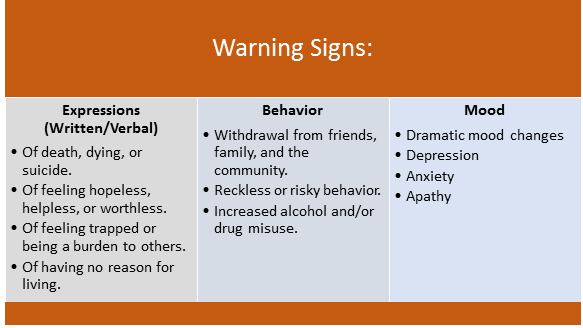Suicide is a serious health issue that needs our attention. It is the third leading cause of death in the world. It is estimated that one million people die by suicide every year. That is one death by suicide every 40 seconds. Suicidal thoughts or actions are a sign of extreme distress. It is not a harmless bid for attention and should not be ignored. It affects people of all genders, ages, and ethnicities. And what is worse is that it is preventable. Every 10th of September is Suicide Prevention Day. It is on this day that we take the opportunity to spread awareness about suicide and what people can do to help prevent it from happening.
To prevent suicide, we should be aware of the risk factors and warning signs to look out for. There is no single cause for suicide. There are different factors that influence someone to make a suicide attempt. Here are a few factors that can tell us who are most at risk for developing suicidal ideation:
Having these factors does not mean that they automatically contemplate suicide. This just means that the more risk factors that apply to them, the higher the chances are that they can develop suicidal ideation and that it would be better to check on them from time to time.
Another important factor to watch out for are the warning signs. These signs tell us that a person is already contemplating suicide and who needs our most immediate help.
If you think someone is contemplating suicide, do not panic! Here is what you can do:
- Ask them. Most of the time, asking the person if they are thinking of suicide is already a big help. Not only will this inform you of how serious the situation is, it also helps the person to express his or her emotions. Just simply expressing his or her emotions and having you to listen can save that person’s life.
- It is important that you empathize. Do not judge them or leave them alone. Listen carefully and learn what that person is thinking and feeling. Researchers suggest that acknowledging and talking about suicide reduces suicidal thoughts.
- Keep them safe. It is also important that you reduce their access to means of harming themselves. Reduce their access to highly lethal items, substances, or places. Make sure that his or her environment is safe.
- Stay connected. Simply checking in on how people are from time to time can also save lives. Ask them how they are, what they are doing, what is going on in their life, if they have any problems, or if they need any help. Studies have shown that the risk of death by suicide decreases when someone follows up with an at-risk person. This means that you can make a difference!
- Encourage them to reach out. This is the most important step. If you think someone is contemplating suicide, encourage them to reach out to a trusted family member, friend, spiritual advisor, or mental health professional.
Availing of a program with PowerVision EAP can help companies facilitate at-risk employees’ access to mental health services. We can provide face to face counseling sessions and 24/7 phone counseling to help at-risk employees deal with their suicidal thoughts and behaviors. We also assist our clients in preparing for and handling crisis situations such as suicide, workplace violence, disasters, and individual traumatic incidents. Providing these services to employees not only helps their mental health but can save their lives as well. Contact us for more information!
References:
- American Foundation for Suicide Prevention. (n.d.). “Risk Factors and Warning Signs.” Retrieved August 12, 2018, from https://afsp.org/about-suicide/risk-factors-and-warning-signs/
- National Indian Council on Aging. (2017). “National Suicide Prevention Week.” Retrieved August 12, 2018, from https://nicoa.org/national-suicide-prevention-week/
- Parekh, R. (2018). “Suicide Prevention.” American Psychiatric Association. Retrieved August 12, 2018, from https://www.psychiatry.org/patients-families/suicide-prevention
- Project Semicolon. (n.d.). “Suicide Prevention.” Retrieved August 12, 2018, from https://projectsemicolon.com/suicide-prevention/
- World Health Organization. (n.d.). “Suicide Data.” Retrieved August 12, 2018, from http://www.who.int/mental_health/prevention/suicide/suicideprevent/en/













